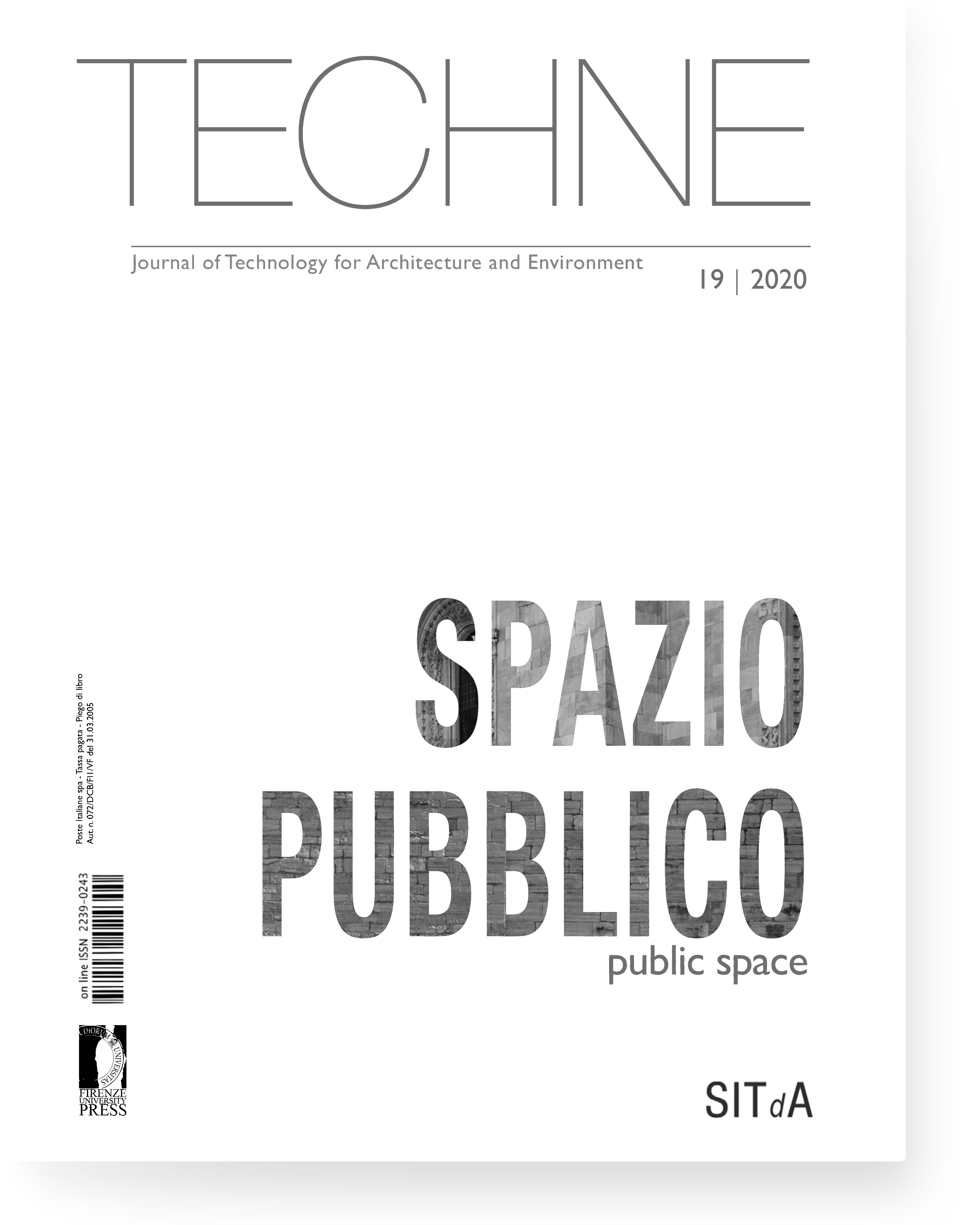Published 2020-05-05
Keywords
- .
How to Cite
Abstract
The reconfiguration of the post-modern city promotes the public space as a place of excellence for material, social and sensorial exchange, restoring the primitive and noble taste of a sphere aimed at collective practice, an ideological model of lifestyles, and a recognised narrative form of evolution and growth of the city.
This space, at the moment, in search of an intimate new identity, is attempting to regain the meanings attributed to it in the past within the Italian cultural context, i.e. urban archetype, meeting space, symbol of the most significant social nuclei; and a geographical, organisational, morphological centre of the city, or a nodal element of its natural module of growth and reading.
Architecture has the task of transforming the immaterial entity of dialogue and socialisation into the material layout of squares, the stones of public spaces, and the streets and districts of cities. Architecture translates the collective consensus into forms and spaces, identifying the theatre in which people spend most of their active existence. The public space is a place of dialogue, read and interpreted as a form of comparison, an absolute context of expression of the city’s culture and of a society that is increasingly easy in terms of communication.







